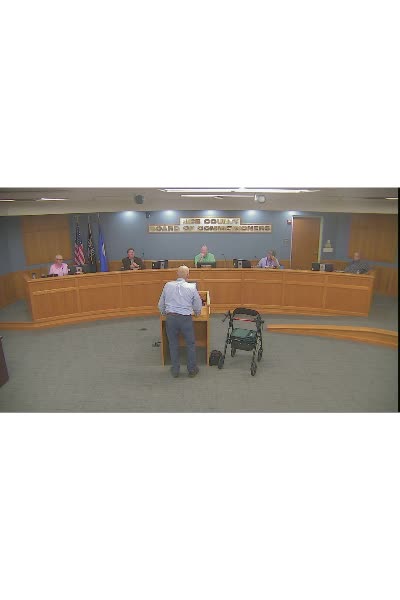Community Divided Over Controversial Gravel Mining Project
June 11, 2024 | Rice County, Minnesota

This article was created by AI summarizing key points discussed. AI makes mistakes, so for full details and context, please refer to the video of the full meeting. Please report any errors so we can fix them. Report an error »

In a recent government meeting, significant concerns were raised regarding a proposed permit application for a gravel mining project in Rice County, Minnesota. Experts and local residents voiced their apprehensions about the environmental impact and the adequacy of existing evaluations.
Professor Mary Sabina, a geologist and anthropologist, emphasized the need for a thorough Environmental Assessment Worksheet (EAW) due to the area's high sensitivity. She pointed out that the current assessments rely on outdated maps from the 1990s, which do not accurately reflect the presence of karst topography—an important geological feature that could affect groundwater. Sabina argued that without on-site investigations, the absence of evidence should not be interpreted as evidence of absence, highlighting the potential for undiscovered karst features.
Local landowners also expressed their concerns. James, a resident whose property borders the proposed site, warned that the project could severely impact his land, including potential damage from increased truck traffic and contamination of wells. He urged the commissioners to consider the long-term effects on the community and the environment, emphasizing the historical significance of his family’s land.
Tony Perella, another local resident, echoed these sentiments, arguing that the beauty and recreational value of the area would be compromised by the mining operation. He urged the commissioners to prioritize the preservation of the landscape over short-term economic gains.
In contrast, Ron Keller, a township supervisor, supported the project, citing the need for local gravel to maintain road quality. He acknowledged the existing truck traffic but argued that local gravel sources would reduce costs and complaints related to road maintenance.
The meeting highlighted a divide between those advocating for environmental preservation and those prioritizing economic development through local resource extraction. As discussions continue, the commissioners face the challenge of balancing these competing interests while ensuring thorough evaluations of the potential impacts of the proposed mining project.
Professor Mary Sabina, a geologist and anthropologist, emphasized the need for a thorough Environmental Assessment Worksheet (EAW) due to the area's high sensitivity. She pointed out that the current assessments rely on outdated maps from the 1990s, which do not accurately reflect the presence of karst topography—an important geological feature that could affect groundwater. Sabina argued that without on-site investigations, the absence of evidence should not be interpreted as evidence of absence, highlighting the potential for undiscovered karst features.
Local landowners also expressed their concerns. James, a resident whose property borders the proposed site, warned that the project could severely impact his land, including potential damage from increased truck traffic and contamination of wells. He urged the commissioners to consider the long-term effects on the community and the environment, emphasizing the historical significance of his family’s land.
Tony Perella, another local resident, echoed these sentiments, arguing that the beauty and recreational value of the area would be compromised by the mining operation. He urged the commissioners to prioritize the preservation of the landscape over short-term economic gains.
In contrast, Ron Keller, a township supervisor, supported the project, citing the need for local gravel to maintain road quality. He acknowledged the existing truck traffic but argued that local gravel sources would reduce costs and complaints related to road maintenance.
The meeting highlighted a divide between those advocating for environmental preservation and those prioritizing economic development through local resource extraction. As discussions continue, the commissioners face the challenge of balancing these competing interests while ensuring thorough evaluations of the potential impacts of the proposed mining project.
View full meeting
This article is based on a recent meeting—watch the full video and explore the complete transcript for deeper insights into the discussion.
View full meeting
